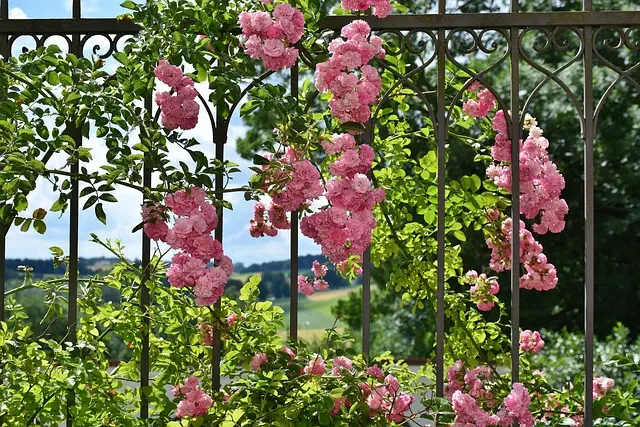The Kratom tree, Mitragyna speciosa, is an evergreen species native to Southeast Asia with broad, leathery leaves and can grow up to 30 meters tall. Its distinct yellow veins, which are more pronounced in Yellow Vein Kratom, are influenced by the alkaloids mitragynine and 7-hydroxymitragynine it contains. These leaves' coloration and alkaloid content are affected by environmental factors such as soil, humidity, and sunlight, which influence the strain's oxidation levels and effects. Yellow Vein Kratom is celebrated for its balanced energy and relaxation, different from the intensity of other strains due to its unique alkaloid profile. The harvesting process is careful to preserve this profile, and the drying method is crucial for maintaining the plant's active compounds before the leaves are milled into a fine powder. The end product is a high-quality yellow vein kratom powder, packaged with quality control measures to ensure purity and consistency. This article explores the physical appearance of the kratom tree and the meticulous process behind creating Yellow Vein Kratom, providing a comprehensive understanding of its origins and effects.
Discover the unique attributes of Yellow Vein Kratom Powder, a botanical marvel sourced from the evergreen Kratom trees native to Southeast Asia. These trees, often referred to as Mitragyna speciosa, exhibit distinct vein colors that influence the alkaloid composition and subsequent effects of the powder. In this article, we’ll unravel the visual and characteristic elements of the Kratom tree, known colloquially as “what does a kratom tree look like,” to understand the origins of Yellow Vein Kratom. We’ll delve into its alkaloid profile, which sets it apart from other strains, and explore how the harvesting process meticulously transforms these leaves into high-quality Yellow Vein Kratom Powder. Join us as we shed light on the intricate journey from leaf to powder, offering you a comprehensive overview of this captivating plant’s transformation.
- Unveiling the Appearance and Characteristics of the Kratom Tree: A Glimpse into Yellow Vein Kratom's Origin
- Exploring the Distinctive Alkaloid Profile and Effects of Yellow Vein Kratom Powder
- The Harvesting Process and Transformation into High-Quality Yellow Vein Kratom Powder: A Comprehensive Overview
Unveiling the Appearance and Characteristics of the Kratom Tree: A Glimpse into Yellow Vein Kratom's Origin

The Kratom tree, native to Southeast Asia, is an evergreen tree whose botanical name is Mitragyna speciosa. This tree’s appearance is distinct and bears unique characteristics that contribute to the varied strains of Kratom leaves, including the sought-after Yellow Vein Kratom. The tree typically grows up to 20-30 meters in height under ideal conditions and possesses a robust structure with a wide, spreading canopy. Its leaves are broad and leathery, with a prominent midrib and veins that, when the mature leaves are harvested, can exhibit the distinct yellow hue for which Yellow Vein Kratom is known. The tree’s bark is dark and rough, with intricate patterns resembling a mosaic of geometric shapes. The alkaloids present in the leaves, such as Mitragynine and 7-Hydroxymitragynine, are responsible for the diverse effects associated with Kratom use, and these compounds are believed to influence the coloration of the leaf veins when the leaves are still on the tree. The Yellow Vein Kratom originates from specific regions within Southeast Asia where environmental factors like soil composition, humidity, and sunlight exposure contribute to the unique oxidation process that differentiates it from other strains, such as Red or Green Vein Kratom. The mature leaves are carefully collected and processed to preserve the alkaloid profiles that give Yellow Vein Kratom its signature effects, which users often describe as energetic yet balanced, making it a popular choice for many.
Exploring the Distinctive Alkaloid Profile and Effects of Yellow Vein Kratom Powder

Yellow Vein Kratom Powder, sourced from the leaves of the Mitragyna speciosa tree, offers a unique alkaloid profile that distinguishes it from other kratom strains. The kratom tree itself is an evergreen with large, broad leaves and can grow up to 80 feet tall in its natural habitat, primarily found in Southeast Asia. The distinctive veins of the leaves from which this strain derives its name are a result of the tree’s response to specific environmental conditions during maturation. These conditions affect the alkaloid composition within the leaves, leading to the distinct effects associated with Yellow Vein Kratom. Alkaloids such as mitragynine and 7-hydroxymitragynine are present in varying concentrations, contributing to its balanced and moderately stimulating effect, often described as a blend of both red and white vein strains’ properties. Users report that Yellow Vein Kratom Powder can provide a sense of well-being and energy without the overpowering sedative effects seen in red veins or the intense stimulation of white veins. This balance makes it versatile for use at different times of the day, depending on the individual’s needs and preferences.
Furthermore, the effects of Yellow Vein Kratom are often reported to be a harmonious blend of both energy and relaxation. The unique alkaloid profile is thought to contribute to this duality, as it can help in maintaining focus and stamina while also promoting a sense of calm. The leaf’s veins contain higher levels of certain alkaloids compared to the surrounding tissue, which is believed to influence the plant’s alkaloid bioavailability and potency. As such, Yellow Vein Kratom is sought after by individuals looking for a balanced experience that supports their daily routines without overwhelming sedation or extreme stimulation. The subtlety of its effects makes it a popular choice among kratom enthusiasts who appreciate its nuanced nature.
The Harvesting Process and Transformation into High-Quality Yellow Vein Kratom Powder: A Comprehensive Overview

The kratom tree, native to Southeast Asia, is a member of the Rubiaceae family and can grow up to 30 feet tall. Its leaves, which are broad and leathery, contain the alkaloids mitragynine and 7-hydroxymitragynine, responsible for kratom’s diverse effects. The harvesting process of yellow vein kratom is a meticulous endeavor that begins with selecting fully matured leaves from the canopy of the tree. These leaves are then carefully processed to capture the unique characteristics of the yellow vein strain. The leaves are handpicked and subsequently laid out under the sun to dry slowly, which helps preserve the alkaloid content and contributes to the development of the distinctive yellow hue that distinguishes this strain from others like red or green vein kratom.
Once harvested, the leaves undergo a specialized drying process that is crucial for the transformation into high-quality yellow vein kratom powder. The leaves are dried in a controlled environment to prevent excessive degradation of alkaloids and to maintain a balance between mitragynine and 7-hydroxymitragynine, which plays a role in influencing the strain’s effects. After drying, the leaves are crushed into a fine powder using high-grade milling equipment. This meticulous process ensures that the end product is of the highest quality, offering users a unique experience associated with yellow vein kratom powder, which can provide effects that fall somewhere between those of red and white vein strains, often providing a balanced blend of stimulation and relaxation. The resulting powder is then packaged to be distributed for consumer use, with each batch closely monitored for consistency and purity to ensure a reliable and effective product.
Yellow Vein Kratom Powder, sourced from the distinctive Kratom tree, offers a unique alkaloid profile that sets it apart in both appearance and effects. The meticulous harvesting process and subsequent transformation into high-quality powder ensure its efficacy and purity, making it a sought-after variant among users. Understanding the origins of the Kratom tree through its visual characteristics, as outlined in our exploration, provides insight into the natural composition that gives rise to this intriguing substance. As a conclusion, Yellow Vein Kratom stands out for its distinct properties and continues to attract interest due to its potential benefits. For those curious about what does a kratom tree look like and how it contributes to the unique qualities of Yellow Vein Kratom Powder, this article has shed light on the intricacies involved in its cultivation and production.






